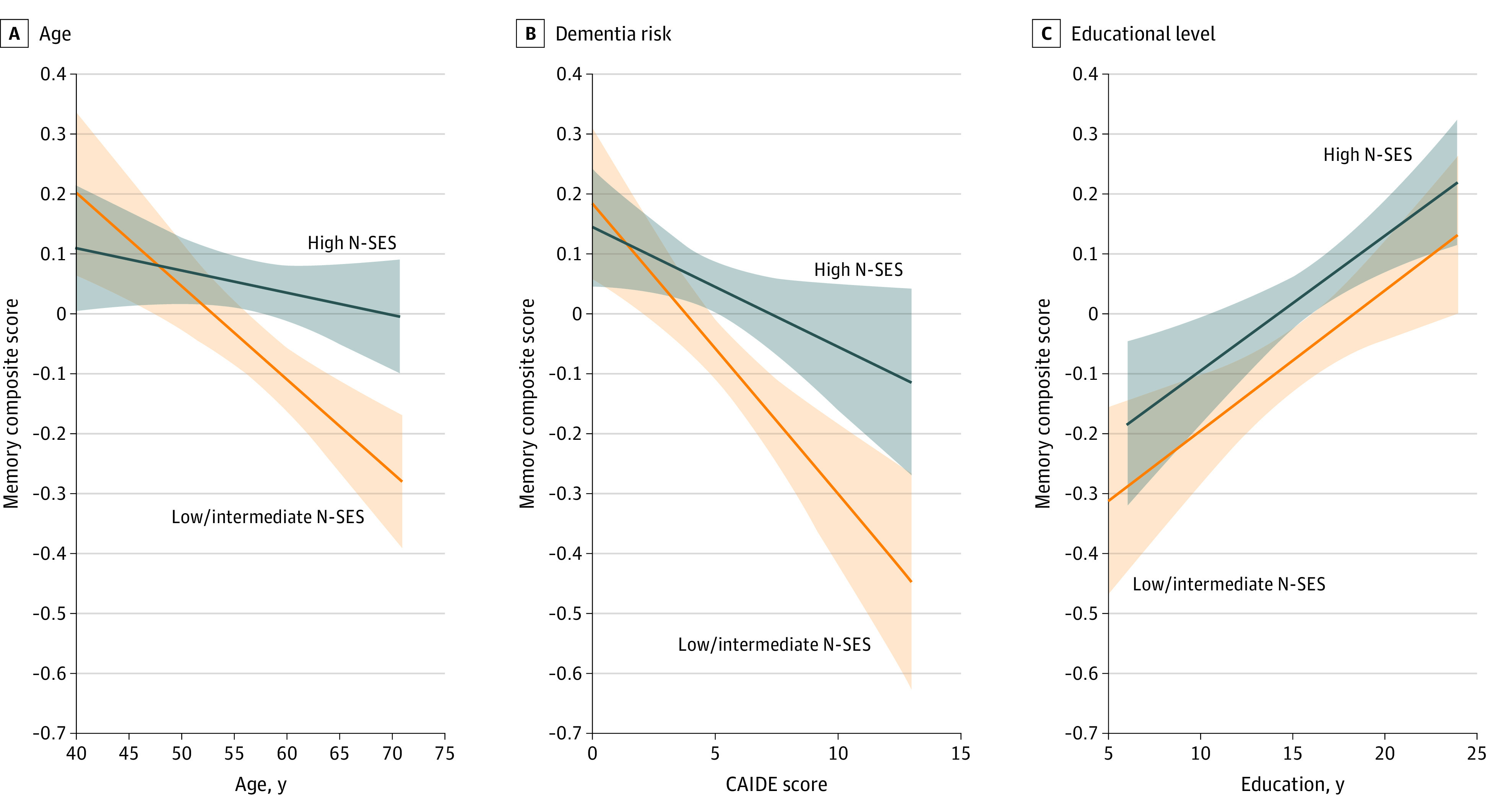Figure 3. Association Between Memory Composite Score and Increasing Age, Dementia Risk Score, and Years of Education by Neighborhood-Level Socioeconomic Status (N-SES).

A, Means were adjusted for sex, years of education, race and residential location. B, Original dementia risk score from the Cardiovascular Risk Factors, Aging, and Incidence of Dementia (CAIDE) tool. Means were adjusted for race and residential location. C, Means were adjusted for age, sex, race, and residential location. The Cogstate Brief Battery memory composite score was based on composite z scores from the one card learning and one back tests. Higher scores indicate a higher number of correct responses. Neighborhood-level socioeconomic status was measured using the Index of Relative Socio-economic Advantage and Disadvantage, with deciles 1 to 7 indicating low to intermediate N-SES (n = 913) and deciles 8 to 10 indicating high N-SES (n = 1268). Shaded areas indicate 95% CIs.
